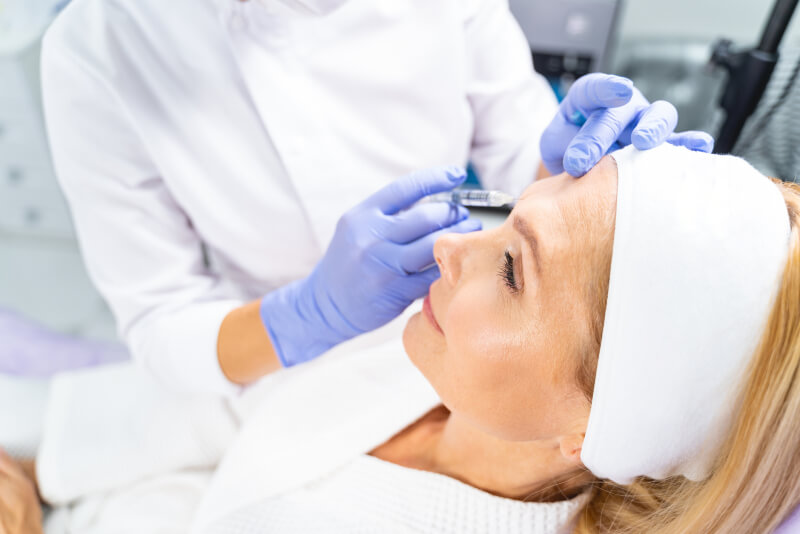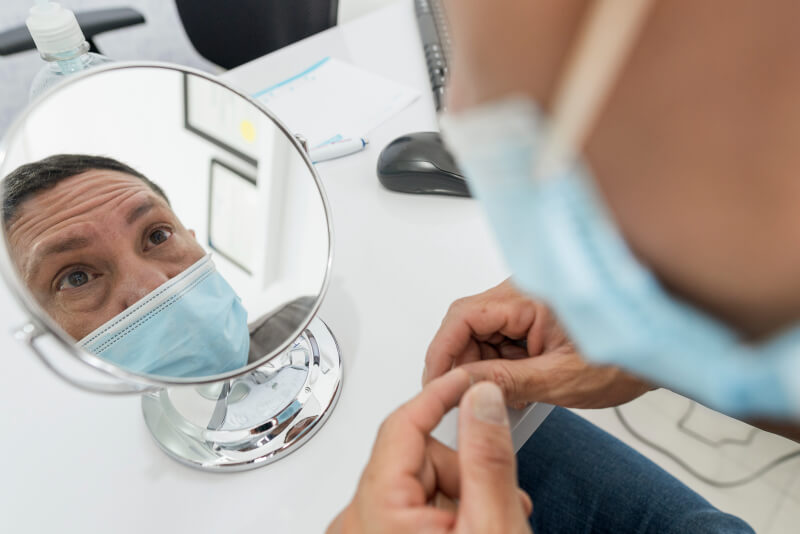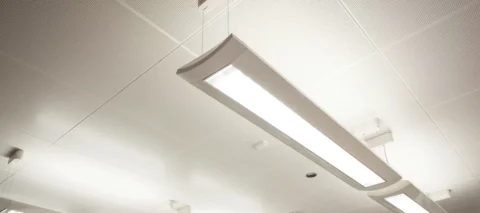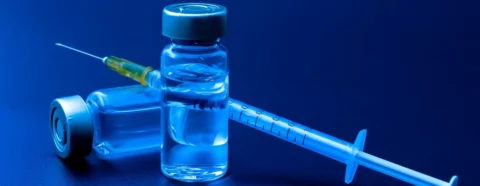A lot of skin care creams, hydrating serums, and moisturizing lotions are useful in rejuvenating and refreshing the skin from the signs of sun damage and aging. But there’s one tried-and-tested approach in wrinkle treatment and non-surgical facial enhancement and that is Botox cosmetic injections. This aesthetic solution works many wonders for your skin, and it has become the go-to treatment especially for forehead creases and fine lines.
So can Botox help correct deep forehead frown lines and wrinkles? Botox injections are a true miracle worker for moderate to severe forehead wrinkles and facial lines. These injections are a popular cosmetic wrinkle relaxer that stops the forehead muscle from contracting to smooth out the deep wrinkles and lines on the skin surface. The injections can last for three to four months, and during that time, Botox also prevents new facial wrinkles from forming.
Forehead Wrinkles: How Botox Works as an Anti-Wrinkle Treatment
Botox is widely popular as the first injectable solution that gained approval from the FDA for aesthetic treatment of moderate to severe glabellar lines, Crow’s feet, and horizontal forehead lines. Since its approval in 2002, the product has been changing the face of the cosmetic and beauty industry with its promise for safe and effective facial rejuvenation without needing invasive plastic surgery.
To understand exactly how Botox injection carries out its age-defying and wrinkle-correcting effects, it’s important to understand that Botox is actually a purified protein form of the bacterium called Clostridium botulinum.The founders of this cosmetic product discovered that it works as an effective neuromodulator that stops the release of nerve signals to weaken or relax the muscles.
Most deep wrinkles and fine lines are a result of excessive and repetitive facial movement and muscle contraction. It is established that a botulinum toxin injection can inhibit muscle activity to allow the affected forehead area to clear away the creases and lines. Botox treatment can also be used to give a forehead lift and brow lift to enhance your facial appearance and improve your eyebrow look.
One of the best things about Botox as a wrinkle treatment is that it trains your muscles to avoid making deeper wrinkles in the long run. Botox patients who get regular treatments eventually get used to having less movement in their forehead or facial muscles which helps them have more control over their facial expressions. So even when the toxin’s effects have worn off, they don’t have to worry about developing new wrinkles in the forehead and between the eyebrows.
What is the Botox Procedure for Deep Forehead Wrinkles?
The forehead is one of the most popular injection areas for Botox and it is important that you get your treatment from an experienced injector. Getting Botox forehead treatment is the same as other cosmetic procedures.
First, you need to have a consultation visit with your provider to assess if you are a good fit for the treatment. Your dermatologist or plastic surgeon will also examine the severity of your wrinkle condition so they can come up with an appropriate Botox treatment plan for you.
Botox for forehead wrinkles is usually injected into the frontalis muscle, which is the muscle responsible for the movement of the forehead and eyebrows. Over time, you’ll notice that this specific muscle pulls the forehead skin up when you make facial expressions and it often results in wrinkles and lines.
An average of 20 to 30 Botox units is usually needed for erasing deep forehead lines and dynamic wrinkles. Your provider will carefully place the botulinum toxin across five injection sites in the forehead. For your first treatment, your doctor will start you on a low dose of Botox, usually at 4 units in each of the injection sites.
You may receive more than the standard amount of Botox units for deep forehead wrinkles treatment depending on your initial results. Most patients come back to their provider after three or four months to get another set of Botox injections with adjusted dosage for optimal results.
Other facial concerns like glabellar lines or vertical frown lines can be treated with an average of 10 to 25 units into the forehead and between the eyebrows. Meanwhile, you may need at least 4 to 6 Botox units for successful brow lift treatment.
During the treatment session, the injections are given using very fine needles so the procedure itself is safe and painless. However, you may still opt to ask for a topical anesthetic or numbing cream to be applied to the area to minimize any discomfort. You may expect the whole Botox procedure to be done in 20 minutes or less than an hour.
What Happens After Botox Injections?

Since the Botox treatment is non-invasive, most patients can recover without needing any downtime. Clients can return to their normal activities almost immediately after getting the injections. But as with any cosmetic procedure, there are some temporary side effects that may occur.
Some of the common post-Botox reactions are injection site pain, swelling, bruising, redness, and tenderness that can last for a few days. There may also be some minor bleeding in the treatment area, and to avoid it from getting worse, you will be reminded to stop taking any blood-thinner drugs or medications prior to the injection.
A number of patients may also experience mild headaches after the Botox treatment but they very rarely occur. A study has reported that no more than 1% of Botox patients can have headaches from the treatment, and they usually only happen if the injection was poorly placed or has hit a frontal bone on the forehead. This incident can be greatly avoided by making sure to receive your injections from certified Botox providers.
Before signing up for the injection, you also have to understand that Botox results are not immediate. Initial improvements may be visible within several days from the treatment but it normally takes 10 to 14 days to see the full rejuvenating effects of the Botox injections.
How Long Does Botox Last For Forehead Wrinkles?
If there is one drawback to Botox injections, it is that the treatment is only a temporary solution to forehead wrinkles. Since the body constantly produces new chemicals, the neurotoxin will gradually lose its hold on the muscles and its wrinkle-relaxing effects will wear off. Once Botox is completely removed from your system, your forehead muscles will be able to move again and make new dynamic wrinkles.
On average, Botox injections for deep wrinkle treatment can last from 3 to 6 months but it begins to decrease its effects starting on the fourth month. It is often recommended to schedule follow-up Botox treatments every three to four months to maintain its effects.
There are several factors that can influence the longevity of your Botox results. One thing to consider is how expressive you are as an individual. If you are the type of person who likes to make facial expressions, the frequent movement of the muscles can affect the spread of Botox in the treated area and it can wear off faster than normal.
The characteristics of your facial muscle can also affect your Botox results. The neurotoxin may diminish faster on the forehead muscle since it has a broader area where Botox can easily spread. In addition, it is said that more Botox unit injections are required in areas with thicker muscles to attain the best results.
Causes of Deep Forehead Wrinkles and Lines

Deep wrinkles, facial folds, and forehead lines are classic signs of skin aging. While you can manage these blemishes with the help of beauty products, it’s hard to completely get back your youthful appearance especially once the skin begins to lose its important structural foundation over time. Here are the leading common causes of forehead wrinkles and facial fine lines:
1. Loss of skin collagen
Collagen is the one term that is often used in the promotion of skincare and anti-aging creams. This is an essential protein that holds your skin together and gives its firm and elastic texture. Collagen production is more abundant in your youth which is why your skin feels soft and radiant in your younger years. It also works with hyaluronic acid to retain moisture in your skin cells to keep your skin from getting dry.
But as you age, the production of collagen naturally declines which contributes to loss of structural support that gives the skin its plump and line-free appearance. Without collagen, the skin becomes more prone to sagging and the smooth surface becomes lined with unwanted wrinkles and creases.
2. Too much sun exposure
The sun releases harmful ultraviolet radiation which has a direct effect on the production of skin collagen. The UV rays can penetrate the layers of the skin and accelerate the breakdown of the skin’s connective tissues where collagen and elastin fibers are created. This process can lead to premature skin aging and result in early wrinkles and fine lines.
More than that, UV damage can cause dark spots, sun spots, pigment issues, and other skin irregularities that may be hard to treat with skin lotions and creams.
3. Lifestyle habits
People who smoke are also prone to certain skin conditions like sagging skin, vertical lip lines, and deep wrinkles around the mouth and lips. This is because cigarettes contain chemicals that can affect collagen production and speed up skin aging. It can also affect blood circulation which decreases the amount of vitamins flowing in your skin which leads to unhealthy-looking skin.
4. Environment pollution and free radicals
Exposure to environmental pollution can introduce free radicals and oxidative stress in the skin which causes changes to the skin structure. They can damage the healthy skin cells and result in the accelerated breakdown of collagen to expedite the skin aging process. Aside from premature wrinkles and fine lines, free radicals are responsible for your skin’s dull complexion and dry or rough texture.
Dermal Fillers or Botox for Forehead Wrinkles
Dermal fillers and Botox are among the popular cosmetic injectables today. But even though they are both lauded as amazing wrinkle and facial rejuvenation treatments, they still have some distinct differences. Compared to Botox which relaxes the muscles to erase wrinkles, a dermal filler actually fills in the wrinkles and lines to smooth out the skin surface.
Dermal filler treatments use gel-like materials made of either collagen or hyaluronic acid substances. The dermal filler material is injected beneath the hollow or sunken areas of the skin to bring back its volume and achieve a fuller and plump look. This treatment is ideal for static wrinkles, which are a type of wrinkle that formed mostly due to loss of collagen and elastin. It also works for deep wrinkles that are accompanied by sagging or loose skin.
On the other hand, Botox is the more preferred treatment for dynamic wrinkles. These facial wrinkles are a result of repeated facial movement over the years which has led to expression lines around the eyes, nose, mouth, and forehead.
The neurotoxin injection is also effective for softening severe forehead wrinkles that resulted from over-contracted muscles. However, if your wrinkles are due to sagging and lost facial volume, you may benefit more from facial enhancement with hyaluronic acid dermal fillers.
It’s important that you get a skin consultation to see which treatment works better for you. In some cases, your doctor may recommend getting both Botox and dermal fillers to improve the wrinkles and restore volume.
Best Skin Care Practices to Avoid Wrinkles and Lines

Botox is a corrective treatment for forehead wrinkles and lines. While it’s an amazing cosmetic solution, there are preventative measures you can do to delay the aging process of your skin. Here are some tips to prevent the early signs of forehead wrinkles and facial lines:
- Invest in sunscreen products and wear them regularly to protect your skin from sun damage.
- Keep your skin hydrated by using hyaluronic acid-based moisturizers and lotions.
- Drink water every day to cleanse toxins and increase your skin hydration to prevent dry skin.
- Make sure to eat a nutritious diet and consume vitamin-rich food to maintain healthy skin.
- You can also consider getting preventative Botox to keep forehead wrinkles at bay. Be sure to consult with your doctor to see how soon you can start Botox injections.
Professional Botox Treatments at Ethos Aesthetics + Wellness
Discover why Botox is one of the most requested treatments for improving the appearance of deep forehead wrinkles and lines with safe and effective procedures at Ethos Aesthetics + Wellness. Our team of expert injectors is trained in administering successful treatments to achieve a revitalized and wrinkle-free look.
Ethos Spa is a premier Botox provider that has helped many clients in New Jersey and nearby areas. We’re dedicated to giving every patient the best aesthetic experience with personalized Botox treatment plans for their specific skin concerns. We also offer other skin treatments like dermal filler, chemical peel, Secret RF Microneedling, and more. Call us today and set up your appointment with one of our aesthetic specialists.







